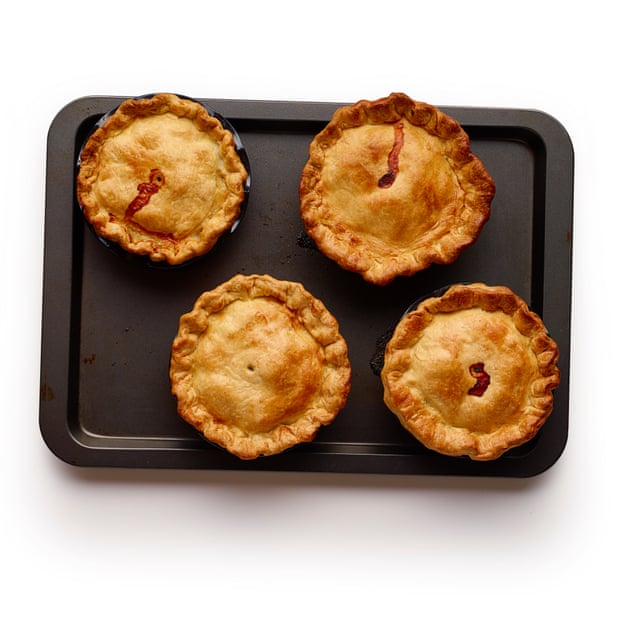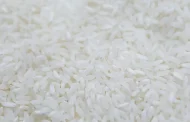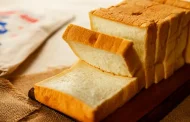Meat and potato pie, meat and ’tatie pie (as Simon Hopkinson calls it, rather than “tattie”), or simply meat pie, is a straightforward name for a straightforward dish. There are no doubt hundreds of different varieties from around the pie-eating world, but here I’m interested in the “oh-so-delicious looking – and smelling!” version Hopkinson recalls from childhood visits to Bury Market with his mother. Indeed, the Salford-born poet John Cooper Clarke has said they’re the thing he misses most about the north: “You can’t get them south of Birmingham. There’s a warning for any readers who might be thinking of going south. Take your own meat and potato pies.” Alternatively, dust off your rolling pin and get baking.
In theory, this should be the most important part of the pie but, in reality, meat and potato pie deserves its rather vague name because it can contain lamb, mutton or beef. (Presumably, it could also contain venison, but I’ve never heard of one with white meat.) Most of the recipes I try use beef: brisket in Hopkinson’s case, shin for Georgina Hayden in Stirring Slowly, chuck steak for Paul Hollywood and mince in the recipe in Angela Boggiano’s book Pie, but Keith Floyd goes for mutton in Floyd on Britain & Ireland (well, he calls for lamb, actually, but seeing as his recipe is for “mutton pies”, I use that instead).
My conclusion is that all of the above make excellent pies, but I’m with Mark Hix when he writes, “Try to buy a single cut for braising, as many butchers just sell braising steak, which can be a mixture of cuts that take various cooking times.” In other words, you can use it, but it’s a lottery, and do you really want to gamble on something this important?
Whatever meat you choose, it’s wise to cut the pieces fairly small, so they cook faster in their pastry coffins; I make the mistake of leaving the mutton cubes too large, and some of them are, unsurprisingly, still rather chewy after an hour in the oven. Using mince side-steps this problem, of course, but we all prefer the more satisfyingly solid texture that chunks of meat give the filling.
Do note that this isn’t a dish where the meat could fairly, if unimaginatively, be described as “meltingly tender”; if you want that, you’ll need to cook your filling before adding it to the pie. Hayden, Hollywood and Boggiano all do so, making rich meat stews that they then simply ladle into a pastry case to heat through as it bakes. Floyd and Hopkinson, however, use it raw, which means that all the meat’s juices remain in the pie, and which somehow feels more pure. The relatively short time in the oven, however, means you have to be extra careful that the cut you use isn’t too lean, or too coarsely chopped – if you use lamb or mutton, shoulder is a good bet, while for beef, skirt or featherblade will do the job in terms of both flavour and texture. (Note that Rachel Roddy also pops in some kidneys, which you could substitute for a fifth of the meat, if you have a taste for them.)
The vegetables
Advertisement
Potatoes and onions are the main attractions, though, like Floyd, you can use shallots, if you prefer (they taste a bit fancy to me). Most recipes don’t specify what sort of potato, but interestingly Hollywood puts in two sorts, “a floury variety, which falls apart and thickens the gravy, and a waxier type that holds its shape to provide texture”, which is a clever trick if you’re going to pre-cook the filling, but doesn’t work so well when there isn’t time for them to do any falling. In any case, we all decide we prefer the floury kind, which provide a soft, fluffy contrast to the more robust texture of the meat. (Again, you’ll need to cut the potatoes fairly small, so they cook through in the oven.)
Hayden also adds carrot for a touch of sweetness, which will, I imagine, be anathema for purists, and Boggiano garlic, which may or may not raise a few eyebrows in Bury Market. In homage to Floyd, however, I’m going to stick with just a pinch of marjoram, but even this is very much optional; this is a dish that makes a virtue of plainness.
The gravy
Flouring the meat will help give a thicker gravy – you can use water for this, if you prefer, as Hollywood and Hopkinson do, but stock will give a more emphatically meaty flavour to proceedings, be that homemade or from an Oxo cube. Floyd also adds a dash of Worcestershire sauce or mushroom ketchup, which, like Boggiano’s brown sauce and Hayden’s mustard, adds a pleasant piquancy – again, you don’t need it, but you will like it.
For a richer, fancier sauce, you might like to add tomato puree, but my pie is going to be a tomato-free zone, so the flavour of the meat takes centre stage. When it comes to this particular pie, less is definitely more.
The pastry
This is the real star here, as far as I’m concerned – all pastry is good pastry, after all – but before you choose what sort to use, you need to establish what kind of pie you’d like to make; what some might regard as a pie in name only (ie, with just a pastry top), a slab pie (with the whole dish lined with pastry), or the kind of pie you can hold in your sticky little hands, if necessary. Personally, loth as I am to cross Paul Hollywood, I think you should disregard the first option: why halve the amount of pastry, unless you have to? Slab pies are delicious, and great for feeding a crowd, but here, like Hopkinson, Hayden and Floyd, I’m going to go for a hand-held pie – the kind you could, as Hayden recommends, stick between a buttered roll to make the Lancashire pie barm so beloved of her husband Pete. (To make one large version, use a deep, loose-bottomed tin about 23cm wide instead of four small ones.)
If you’re making this pie, I’m assuming you’re not vegetarian, so embrace the animal fats and give it a proper crust – you could go with a simple shortcrust, which has its own charms, but is tricky to get sturdy enough to give the pie the structural integrity required to stand alone. For that, you’ll need Hopkinson’s dripping, Hayden’s suet or Floyd’s hot water crust (for which I use, and highly recommend, the recipe in pie king Calum Franklin’s new book The Pie Room, using lard and rosemary). But seeing as this is a meat pie, suet or dripping feel the most apt; I love the flavour of dripping, but the flakiness of suet edges it for all of us.
Meat and potato pie is, I think, delicious with peas (fresh or mushy) and extra gravy, or a splash of brown sauce or a dollop of piccalilli. Whether you also have it in a buttered barmcake is entirely up to you.
Perfect meat and potato pie
Prep 35 min
Cook 60 min
Serves 4
For the pastry
500g plain flour, plus extra for dusting
Salt
250g grated suet
Oil, butter or dripping, to grease
2 tbsp milk, for brushing (optional)
For the filling
600g mutton or lamb shoulder, or beef skirt or shin, finely chopped
1 tbsp flour
300g peeled floury potatoes, finely diced
1 onion, peeled and finely chopped
4 tbsp beef stock or water
1 tbsp Worcestershire sauce (optional)
1 pinch fresh marjoram (optional)
Start with the pastry. Put the flour and a good pinch of salt in a large bowl, then add the grated suet and cut it in with a knife.
Stir in about 90ml very cold water, then gradually add more water until you have a smooth but not sticky pastry. Wrap well and chill for at least 20 minutes.
Felicity Cloake’s meat and potato pie 03
FacebookTwitterPinterest
Meanwhile, put the meat in a bowl with the flour and season well. Stir together, then add the remaining filling ingredients.
Felicity Cloake’s meat and potato pie 04
FacebookTwitterPinterest
Advertisement
Heat the oven and a baking tray to 220C (200C fan)/425F/gas 7. Lightly grease four pie tins about 12cm wide x 3cm deep; if they’re not loose-bottomed, line the bases with circles of greaseproof paper.
On a lightly floured work surface, roll out the pastry to about ½cm thick, then cut out circles slightly larger than the tins.
Felicity Cloake’s meat and potato pie 05
Use these to line the tins, bringing the pastry up the sides to cover the rims. Spoon in the filling and use the remaining pastry to make lids.
Moisten the pastry rims with a little water, then press on the lids. Crimp or press down with the back of a fork to seal, then cut a small hole in the middle to let out the steam. Brush the tops with milk.
Bake for 25 minutes, then turn down the heat to 180C (160C fan)/350F/gas 4 and bake for about 25-35 minutes more, until the pastry is deep golden. Leave the pies to cool in their tins for 10 minutes before carefully lifting out and serving.
theguardian







